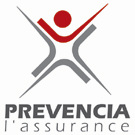Of the five basic covers often found in a house insurance policy (fire, water damage, theft, glass and civil liability), the cover for theft is the most likely to cause dissatisfaction and frustration. Your policy must specifically mention theft, and the police report must state that a door, window or shutters were broken – that an entry was forced. Note that each insurance company will have different requirements relating to shutters and window bars, the number of locks and even an alarm system, as well as when and how these must be used. If these conditions are not met when the theft occurs, the cover could be refused. As always, check the details of your own policy.
Proving that you owned something that you no longer have
Theft, fire, storm or water damage can all result in claims to replace damaged or missing possessions. With theft, the onus is on you – the policy holder – to prove that you really owned something that you’re claiming for. Here is our advice for managing that.
Photographs
You can take photos of each wall of each room and several of the middle of the room. Open cupboard doors and take more photographs. This will give the loss adjuster proof of what was in your house, although not proof of value – but the amount needed to replace stolen items can be discussed with the loss adjuster. Contents are divided into three categories: common furniture, valuable objects and jewellery. You will find the definitions of these in your general terms and conditions booklet.
Receipts or valuations
Photographs are very low quality evidence of valuables (but nevertheless are helpful), which is why the loss adjuster will ask for receipts or valuations for these categories. Valuations should be less than two or three years old, although even old valuations will help. There are good expert companies in France which can assess your belongings. You can also ask a well-known jewellery shop to clean and carry out maintenance on your jewellery. They will then give you a written report of what they have seen and its current value.
Keeping photographic and documentary evidence off-site
Photos and valuations of valuables should be kept in a secure place, not in your home, because this evidence can also be destroyed by a fire. We advise our clients to:
- Convert receipts or valuation documents digitally (scan them or just photograph them with a digital camera).
- Add them to your collection of photographs, also in a digital format.
- Do yourself a favour by naming the files meaningfully (lawnmower-april-2015.jpg is better than DSCN7865.jpg.
- Burn the lot to disc and store them off site.
Storing these files off site can be done in many different ways and you’ll know what suits you best. Here are some options:
- If you’re using a CD-ROM or DVD and if you can password-protect the disc, then keep the disc in your car . . . if the car is far enough away from the house to be at less fire risk than the house . . .
- Ask friends or family to store the disc for you.
- . . . or wrap the disc in bubble-wrap (protection against damp), put it in a biscuit tin (protection against mice and rats) and keep it in a separate building.
- Upload the lot to a remote file-sharing or data-backup service (which is easier to add to than a physical disc), for example:
- Dropbox Basic, 2Gb of free storage (enough for 300 – 500 photos).
- Carbonite Basic, €60 a year for unlimited data storage.
- Google Drive, 15Gb of free storage.
There’s no doubting that this can be a laborious job, but being prepared is better than having your claim refused. Needing to demonstrate that you really did own the stuff you’re claiming for – and that you can demonstrate its value – helps reduce false claims and in the long run helps keep premiums down. Maybe this sugars the pill a bit! Our advice: get scanning, get photographing, get organised! Parts of this article were originally published in The Connexion in May 2008.
The information provided here is for general guidance. The exact details of your policy will define your legal and contractual obligations. What is written there will take precedence over what is written here.
Ces informations sont données à titre indicatif. Pour connaître précisément vos obligations légales ou contractuelles en relation avec votre contrat d’assurance, veuillez vous référer aux conditions générales et particulières de votre contrat.
